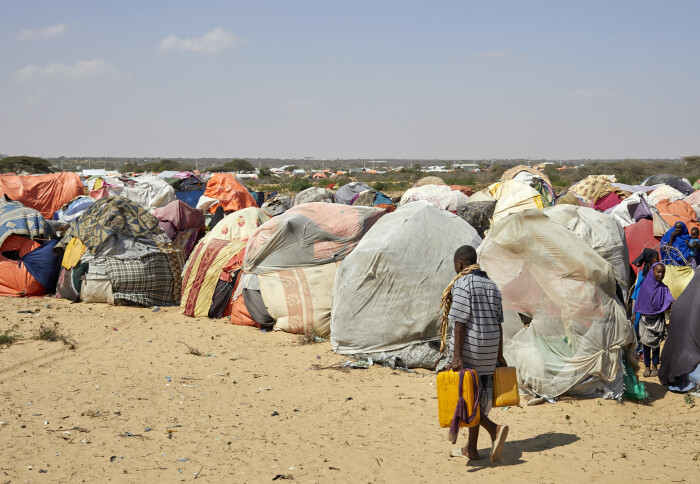Without climate change, the Horn of Africa drought wouldn’t have happened

Dayniile displaced people camp in the Mogadishu region, Somalia. Image by Ismail Taxta, ICRC.
The drought in the Horn of Africa wouldn’t have happened in a world without climate change, according to a new study by World Weather Attribution.
Led by Dr Friederike Otto at the Grantham Institute, the study determined the role climate change has played in the East Africa drought, which began in October 2020 and has been described as the region's worst drought in 40 years.
More than 50 million people are believed to have been directly affected by the drought in the region, where millions of people’s livelihoods rely on rainfall to cultivate crops and raise livestock.
By December 2022, the United Nations reports that 7.1 million people were at risk of acute malnutrition in Somalia alone, including 942,000 children.
Additionally, a separate study published by Imperial College researchers in March estimates that 43,000 people died in Somalia in 2022 due to drought conditions, with half of the deaths among children under five years old.

Investigating the role of climate change
The drought study was conducted by 19 researchers as part of the World Weather Attribution initiative, including scientists from universities and meteorological agencies in Kenya, Mozambique, South Africa, the United States, the Netherlands, Germany and the United Kingdom.
It focused on a 24-month period from January 2021 to December 2022 and included areas of southern Somalia, southern Ethiopia, and eastern Kenya.
Drought is driven by periods of low rainfall, but can be worsened by extreme heat, which evaporates water from soil and plants. This process is known as ‘evapotranspiration.’
To determine if climate change influenced the rainfall and evapotranspiration, WWA scientists used weather observations and computer modelling simulations, which compared the likelihood of the drought occurring in today’s world – with about 1.2°C of human induced global warming since the late 1800s – to the likelihood of it occurring in a hypothetical world without human-induced global warming.
They found that while climate change hasn’t had a significant impact on levels of rainfall, the evapotranspiration was increased by climate change and made the drought about 100 times more likely.
They concluded that in a 1.2°C cooler world, without human-induced global warming, a drought of similar intensity wouldn’t have occurred at all.

Vulnerability turned the drought into a disaster
The Horn of Africa is one of the world’s most impoverished regions. While climate change made the drought more extreme, Dr Otto says conflict, state fragility and poverty made the impacts worse.
“This study shows very strongly that drought is much more than just the lack of rain and that the impacts of climate change strongly depend on how vulnerable we are. And one of the main findings from the recently published IPCC synthesis report is that we are way more vulnerable than we thought.”
Despite some reported rains in parts of Kenya at the end of March, the drought conditions are not likely to recover quickly enough to see improvements in food security before mid-2023.
Joyce Kimutai, Principal Meteorologist and Climate Scientist at the Kenya Meteorological Department, and a contributing author, says urgent action needs to be taken to prepare for future droughts.
“Frequent multi-years droughts compounded with heat extremes in the main rainy season, will severely impact food security and human health in the Horn of Africa as the climate continues to warm. It is time we act and engage differently.”
Article supporters
Article text (excluding photos or graphics) © Imperial College London.
Photos and graphics subject to third party copyright used with permission or © Imperial College London.
Reporter
Sam Ezra Fraser-Baxter
The Grantham Institute for Climate Change